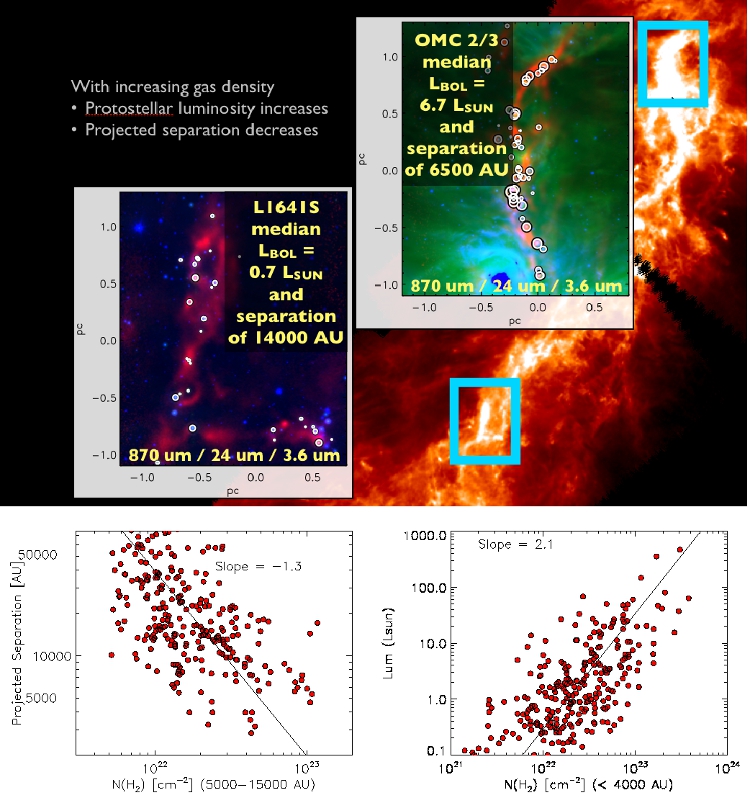| EPoS Contribution |
|
Connecting Environment with Protostars with the Herschel Orion Protostar Survey
Thomas Stanke ESO, Garching, GE | |
|
Large samples of protostars identified and studied with the Spitzer and Herschel
observatories can now address the question: how does the environment influence
protostars and the formation of stars in general? In the course of the
Herschel Orion Protostar Survey (HOPS) we obtained wide field far-IR and sub-mm maps
using Herschel and APEX, covering large portions of the Orion A and B giant molecular
clouds. We use the data to constrain fundamental properties (luminosity, bolometric
temperature, envelope mass and density) of a large sample of ~300 protostars located
in a wide range of environments: from the immediate vicinity of the Orion Nebula Cluster
to much less crowded regions to the far south of the L1641 cloud. In particular, the
Herschel data are crucial to constrain the protostars luminosities, which are tightly
related to the protostars accretion rates.
We also use the combined Herschel and APEX maps to construct
wide-field dust temperature and column density maps of the vast network of filaments
and clumps that extends through the Orion molecular clouds.
With these data, we can use the diverse environments and large sample of protostars
present in the Orion clouds as a natural laboratory to empirically determine
the influence of environment on the observed and inferred properties of the protostars.
We demonstrate that the environment matters by showing that the protostellar luminosity functions vary between regions in the cloud, with the luminosities being systematically higher in the densely clustered OMC2/3 region. We then relate the properties of the protostar population with the temperature and column density of the extended dense gas environment surrounding the protostars. We find the average spacing between neighboring protostars scales inversely with the column density of the surrounding gas. A careful comparison of protostellar luminosity functions over several subregions indicates that luminosity increases with gas column density. If the higher luminosities are the result of higher accretion rates, then either the IMF is varying or - if the IMF is not varying - protostar evolution is more rapid in high stellar and gas density environments. | |
 | |
| Caption: Dependency of protostar spacing and protostar luminosity on column density. Top: direct comparison of the high column density filament OMC-2/3 and a low column density filament in L1641-S. Bottom: Relation between protostar spacing (left) and protostar luminosity (right) with column density for all HOPS protostars. | |
| Collaborators: T. Megeath, U. Toledo, USA A. Stutz, MPIA, Germany The HOPS team |
Suggested Session:
Cores to Disks |

